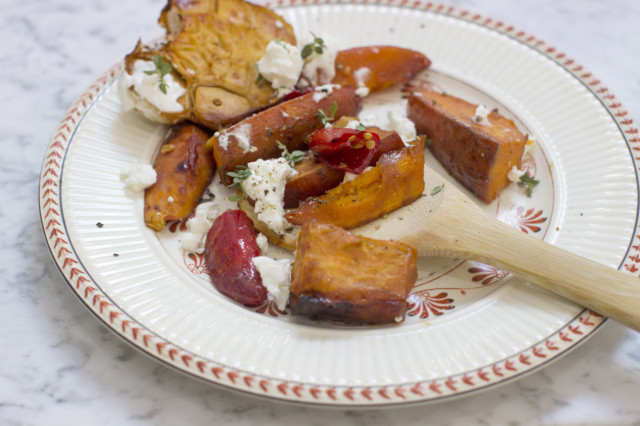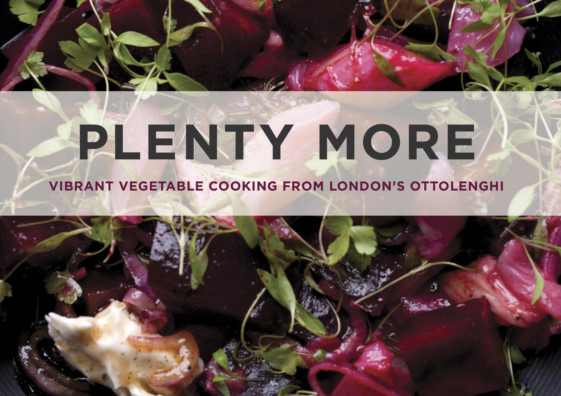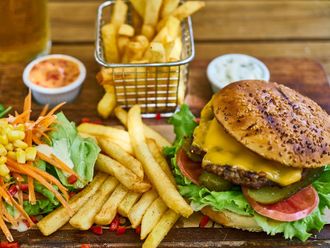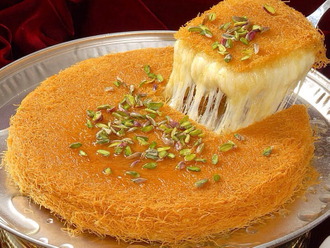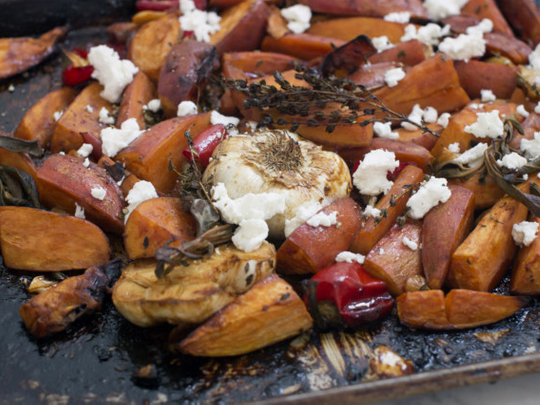
In his early days as a vegetarian recipe columnist for the Guardian, a major British newspaper, chef Yotam Ottolenghi worried that he would run out of ideas.
Not a bit of it.
Eight years later, the London-based Ottolenghi helms an empire built on those ideas, including several hugely popular cookbooks. And still he hasn’t lost his enthusiasm for vegetables.
“I don’t think it’s very difficult to make vegetables delicious,” says Ottolenghi, who has a new book — Plenty More — dedicated to doing just that. “It takes a little bit more work than if you eat animal protein — that has a bit more flavour in it. But I don’t think it’s very hard. It’s just about working with what you’ve got.”
Ottolenghi is known for a cooking style that incorporates Middle Eastern, Mediterranean and other flavours, adding new depths to familiar dishes. He oversees four London restaurants, as well as a sizeable retail operation for packaged foods, such as chili flakes and tamarind pulp.
One issue with promoting vegetable-centric cuisine, he says, is winning over an audience that may have been traumatised by childhood experiences — Brussels sprouts boiled beyond recognition, or sad cauliflower florets gone belly-up in a greasy sauce.
But sprouts that have been crisply fried in olive oil and served with caramelised garlic and lemon peel? Or a cauliflower cheesecake that emerges golden brown out of the oven? That’s an entirely different kettle of kale.
For instance, Ottolenghi transforms the classic beans on toast dear to British hearts into five hours of slow cooked and redolently spiced chickpeas served with the requisite egg on top and a sprinkling of za’atar, a Middle Eastern spice mixture. Sure, it takes a little longer than opening a can, but he recommends cooking this on a weekend when you “are puttering around in slippers at home”.
Ottolenghi’s new book is divided into methods of cooking — fried, mashed, roasted, etc — which is aimed at helping home cooks broaden their repertoire. It follows his bestselling Plenty, published in 2011.
“There’s tonnes and tonnes of ways to cook vegetables and it’s very important to know that if you are going to really make them exciting,” says Ottolenghi.
And for those with a sweet tooth, there’s a dessert section featuring recipes such as poached quinces and an intriguing take on trifle that consists of stewed blackberries with bay custard and gin. Unlike some chef cookbooks which come across as more aspirational than inspirational, this is the kind of book designed to get you into the kitchen, or at least thinking about it.
Want to try it for yourself? Check out Ottolenghi’s sweet potatoes with orange bitters. They are ridiculously good and addictive.
------
SWEET POTATOES WITH ORANGE BITTERS
2 hours (30 minutes active)
Servings: 4
1 1/2 cups freshly squeezed orange juice (the juice of 4 to 5 oranges)
1/3 cup packed brown sugar
1/4 cup vinegar
1/4 cup Angostura bitters
1 1/2 tbs olive oil
Salt
4 to 5 sweet potatoes, not peeled, halved crosswise, each half cut into 1-inch wedges
2 red chilies, slit open along the centre
3 sprigs fresh sage
10 sprigs fresh thyme
2 heads garlic, unpeeled and halved horizontally
3 ounces soft goat cheese, broken into pieces
Steps
Heat the oven to 220C.
In a medium saucepan over high heat, combine the orange juice, sugar and vinegar. Bring to a boil, then turn down the heat to medium-high and simmer fairly rapidly for about 20 minutes, or until the liquid has thickened and reduced to a scant 1 cup. Add the bitters, olive oil and 1 1/2 tsp of salt.
Place the potatoes in a large bowl. Add the chilies, sage, thyme and garlic, then pour in the reduced sauce. Toss well so that everything is coated. Spread the mixture in a single layer on a rimmed baking sheet.
Roast for 50 to 60 minutes, turning and basting the potatoes every 15 minutes or so. They need to remain coated in the liquid in order to caramelise, so add more orange juice if the pan is drying out. At the end, the potatoes should be dark and sticky. Remove from the oven and leave to cool slightly before arranging on a platter and dotting with the goat cheese. Serve warm or at room temperature.
Nutrition information per serving: 450 calories; 90 calories from fat (20 per cent of total calories); 10g fat (4g saturated; 0g trans fats); 10mg cholesterol; 78g carbohydrate; 6g fibre; 36g sugar; 9g protein; 900mg sodium.
(Recipe adapted from Yotam Ottolenghi’s Plenty More, Ten Speed Press, 2014)


